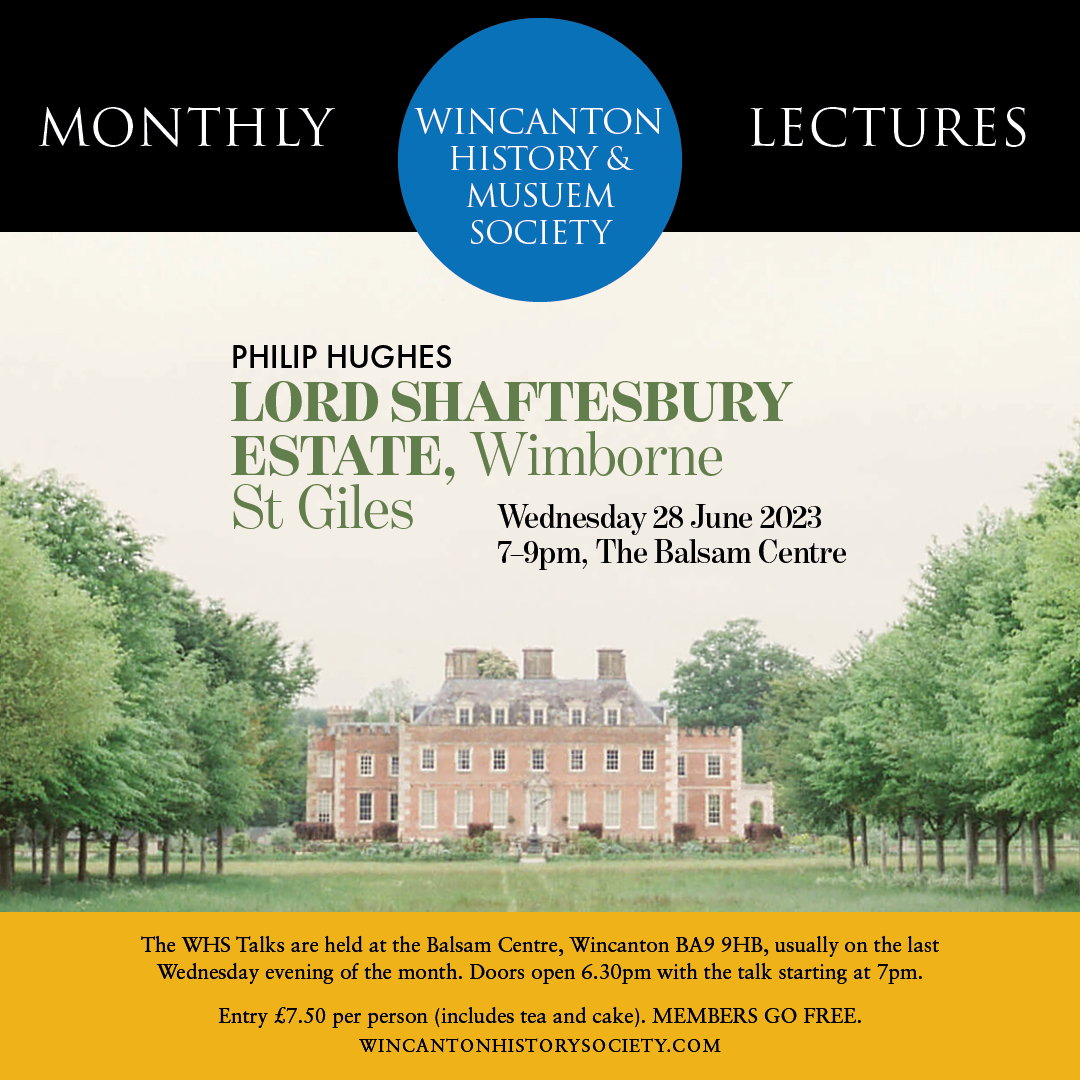TALKS
Our popular WHS Talks are held at the Balsam Centre, Balsam Park BA9 9HB (accessed from Memorial Hall Car Park), usually on the last Wednesday evening of the month.
Doors open 6.30pm with the talk starting at 7pm. Our 9 talks throughout the year range widely, covering local and national topics such as the Roman Villa at the Newt, life of a local vet in 20th century, restoration of Earl of Shaftesbury’s house, the Nuremburg Trials.
A brief round-up of previous talks are available if you click the “Previous Talks” button further down this page.
The programme is being constantly developed so do revisit this site, check out our Instagram or Facebook and look out for our eye-catching posters in various locations around the town advising forthcoming subjects.
Entry Charges (per person):
Members and under 18s: free
Non-members: £10.00
From time to time Special Talks are being booked. The venue for these is the Memorial Hall. Last year we heard from John Blashford-Snell, and enjoyed a live performance of Flamenco dancing. Charges for these talks differ from the standard Talks charge. Keep an eye on this site for details.
Special Talks (per person):
Members: free (donation welcomed)
Non-members: See listing for prices


Philip Hughes: Lord Shaftesbury Estate, Wimborne St Giles
28 June 2023 @ 19:00 - 21:00
Breathing Life Back into St Giles House at Wimborne St Giles
A good crowd came to the Balsam Centre to hear an overview, delivered by Philip Hughes, of the fortunes of Lord Shaftesbury’s house at Wimborne St Giles and its gradual repair and conservation (from 2011 to 2014).
Having been in the same family for centuries, St Giles House has a complicated development with numerous changes wrought over time. Changes from warm brick to lime plaster, stucco, dark colours, lowered or raised cills, etc, etc according to the fashion of the day (plus ça change) can be traced if you know where to look, as Philip showed us. By the end of the 20th Century, it was in a sorry state. Yet at a time when many country houses and stately homes were ceasing to be, this house survived, after a fashion, although substantially reduced in size. A programme of considerable demolition had been carried out in the 1970s and remedial work begun on the remainder but the gusto with which this had been started subsided and utter discouragement had taken over, thus the building was, essentially, abandoned for over 40 years.
When Philip Hughes was retained, very early in the present century, to produce a detailed survey on the house, he found a very sorry building suffering damage and destruction wrought by neglect and the use of unsympathetic materials over many decades, materials which had been the latest thing when originally used, but now causing untold horrors. From water pouring in from roof to basement, to lack of structural support at key points, to dry rot, the sagging building he surveyed was in an advanced state of decrepitude. Much of the initial survey of the fragile building was undertaken by torchlight and accompanied by the flapping of failing temporary bituminous roof covering and zinc “protection” in windows and other openings resulting from the 1970’s demolitions.
Treatment of dry rot in the 1980’s involved extensive stripping out and destruction. However, exploration around the grounds and other estate buildings yielded materials removed from the house, stored under cover or laid out in the grounds, then protected to a greater or lesser degree by overgrowth in the park. These were carefully gathered up, the jig-saw puzzle undertaken and elements reinstated wherever possible.
With determination and the unwavering backing of Lord and Lady Shaftesbury, a small but dedicated team of builders and specialists (who were all listed out by Philip), have spent years on a demanding but satisfying journey to return this house, full of history, to a liveable condition and thence to a working building which stands testament to the vision of those who contributed to its existence over centuries and it now earns its living today hosting events.
A selection of photographs, drawings and plans gave us a detailed insight into the detective work undertaken to catalogue the various phases of building, the alterations dictated by changing fashions, then the reduction in size and height to more manageable proportions. We were also shown evidence of the atrocious state of affairs when Philip became involved, alongside images of the restored rooms. These before and after shots left us in no doubt as to the scale of this project.
And the awards garnered by the project are testament to the enthusiasm and vision of Lord and Lady Shaftesbury as well as the success achieved by all those who have worked on the project under Philip’s guidance and direction. This has been an undertaking that has obviously taken over the lives of those involved, particularly Philip whose attachment to the project was very evident.
Fleeting mention was made of works undertaken to several more buildings on the estate including the repair and conversion of the Riding House to provide accommodation for events and the conservation of the astonishing shell grotto.
For those who would wish to see the results of this fascinating project, it would undoubtedly be worthwhile keeping an eye on events taking place at St Giles House, Wimborne St Giles. For others, Lord Shaftesbury’s book, entitled, the Rebirth of an English Country House, copiously illustrated, will undoubtedly expand on the wealth of information Philip compressed into his well-received talk.
